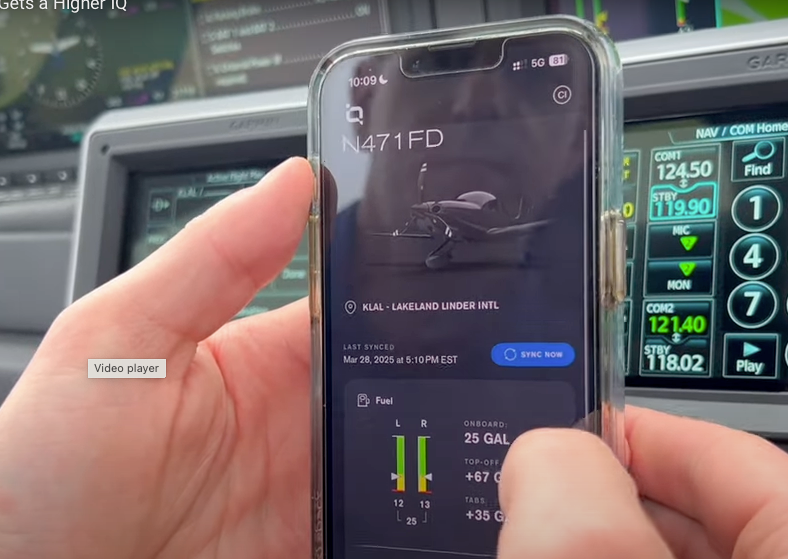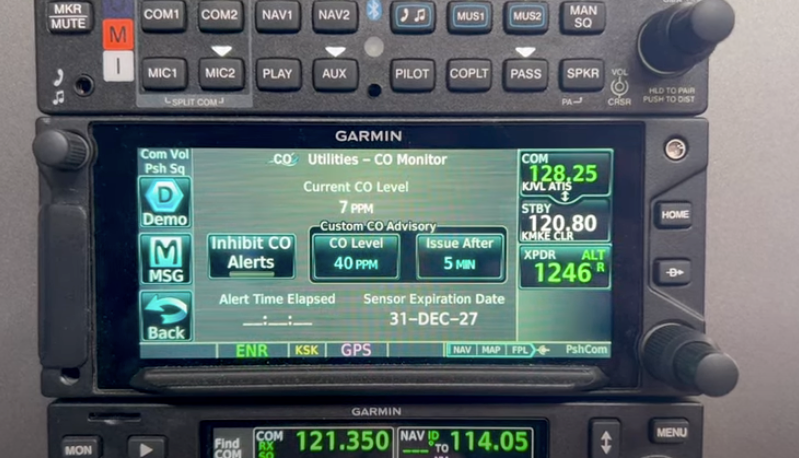Wanted: A Methodical Means to Close Towers
Guest editorial by Jason Blair. As the government’s budget sequestration gains steam, the FAA is expected to announce which control tower might close as a result, perhaps as early as today. Discussion on this topic has produced plenty of opinions, some valid and some best characterized as fear mongering, in my view.
As the government's budget sequestration gains steam, the FAA is expected to announce which control tower might close as a result, perhaps as early as today. Discussion on this topic has produced plenty of opinions, some valid and some best characterized as fear mongering, in my view.
Sequestration cuts will likely result in at least temporary tower closures. This isn't the doing of the FAA, but that doesn't necessarily mean the FAA is choosing which towers will close in a manner that best serves long-term aviation interests or safety. I am hopeful that any permanent closures will be evaluated using more thorough methodology. There actually is a formal process to do this.
I can't say that all control towers should stay open. In fact, I can personally think of a few where the level of enplanements, traffic volume, or the types of activity that once justified a tower changed long ago. These towers should probably go. But I also know that there are places where towers do a great deal to help pilots avoid accidents.
The FAA has a document called "Establishment and Discontinuance Criteria for Airport Traffic Control Towers" (PDF). Updated in 1990, this document represented a change in policy from previous standards to justify a tower. Until 1974, air-carrier airports needed a minimum of 24,000 annual itinerant operations, while general aviation airports needed at least 50,000 annual itinerant operations to establish a tower. In 1975, this baseline was revised to incorporate a benefit-cost analysis model that considered accident risk, reduction of flying time, mix of aircraft types, percentage of passengers injured and percent of aircraft damaged.
In the FAA's eyes, the foremost benefit of having an control tower is safety. According to the agency, safety benefits of having a tower include reduction in the frequency of midair collisions, fewer instances of aircraft damaged in landing accidents, and assistance to pilots in avoiding accidents. In my view, there's no doubt that the density of traffic and the benefit of having a tower correspond.
Towers are established with consideration given to site-specific activity forecasts, accidents avoided, and reduced flying time. After evaluation of these criteria and the costs of operation, an airport is "eligible for a tower establishment when the benefits which derive from operating the tower exceed the installation and operating costs…A tower meets discontinuance criteria when the costs of the continued operation exceed the benefits."
The FAA even assigns "explicit dollar values…to the prevention of fatalities and injuries, and time saved." In 1990, when this report was written, a single fatality was valued at $1.5 million and a serious injury at $640,000. Adjusted to today's dollar value, this would be equivalent to about $2.59 million and $1.1 million, respectively. I know assigning a dollar value to life is tought to stomch, but for objective analysis, you have to do the math.
But we aren't talking about the establishment of new towers; we are discussing the discontinuance of tower operations. The FAA addresses this too, as follows: "When considering discontinuance of a tower, a site-specific analysis will be performed that would include consideration of:
- Assurance that factors unique to the location such as weather and topography, are properly accounted for;
- Potential use of the site to provide capacity and training relief for a hub airport;
- Impact on adjacent facilities;
- Operational factors otherwise accounted for by the benefit-cost analysis;
- The possibility of significant changes in traffic activity attributable to local conditions;
- and military requirements.
But the FAA does acknowledge that "for tower discontinuance, however, we do not normally know, nor can we ascertain the site specific likelihood of collision occurrence in the absence of the tower." This is more difficult to calculate, but one could imagine it would not be too dissimilar to the establishment criteria.
Control towers exist to increase safety in high-traffic density areas. Put bluntly, "airport traffic control towers are effective in preventing collision between aircraft." There are many services a tower can provide to help aircraft and flight crews mitigate the risk associated with operating in the terminal area, in close proximity to other aircraft.
During daylight hours, a simple call from the tower to remind a pilot to put the gear down can save, if not a life, at least a great deal of aircraft damage. Towered airports help pilots make sure they are choosing a runway that is in alignment with the prevailing wind by establishing an active runway, providing order to the flow of arrivals from many different directions and departures destined similarly. Ground controllers help avoid incursions.
At busy airports, a tower controller limits overall traffic pattern volume, helping to avoid conditions that are likely to increase the risk of an accident. On the ground, tower controllers manage taxiing aircraft, helping them avoid runway incursions with aircraft landing or taking off.
Despite all the discussion about tower closures, there has been little mention of the "upstream" effects of a tower closure. Towers don't just interact with the aircraft in their airspace, but they also help coordinate traffic with neighboring and overlying airspace controllers. Airline and IFR traffic volumes are unlikely to decrease just because of tower closures, and these are two groups that must use ATC services. This doesn't mean they need a control tower, but control towers do allow coordination with radar control facilities. In a closure, the coordination these tower controllers offer will need to be managed by the upstream facilities, something that takes time and can reduce the number of IFR departures able to operate at some airports with previously operating control towers.
Clearing an aircraft in IFR conditions without a tower requires blocking of the airspace for a designated period of time or until the controller is able to receive communication and radar tracking of the aircraft. No other aircraft can be cleared for takeoff or landing until this is established. If the other facilities see their workload increase, another effect may be that they may not always be able to provide optional traffic separation services to VFR traffic, leaving previously monitored traffic to do it on their own and no longer be monitored (or to receive traffic advisories). It's also true that towers sometimes impose VFR procedures that are less efficient than simply landing at an airport without a tower. And for those airports with a remote communication outlet directly to the controlling facility, pilots can obtain clearances and releases directly from the separating controller. In some cases, this might be faster, but in others it won't be.
Coordination with upstream facilities helps adjust traffic volume for radar and Center facilities. Without a tower to coordinate IFR clearances, however, flight crews may choose other airspace not normally used to accommodating their operations, simply shifting the burden to other controllers.
Beyond delay considerations, I can imagine the potential for high-traffic areas to become overburdened with the addition of new traffic workload. Could this cause a controller to become saturated with traffic that they didn't traditionally serve and potentially neglect other areas? No one wants to think about such consequences, and they are hard to quantify, but such a scenario isn't out of the question.
A tower cannot prevent all accidents, of that there is no doubt. But neither is there doubt that their involvement in the management at high-traffic density airports or those with a diverse mix of aircraft types can reduce accidents and incidents.
Control towers are costly. Evaluating the location and operation of towers must be data based and done in earnest. Annual operations data for the airports and their projected future operations are important, but the type of aircraft and operations should be considered, too. For many airports, these evaluations and characteristics have probably changed since the original establishment of a tower. To accurately determine the airports that should continue to have a control tower, we should methodically evaluate these factors based on current information.
 I'm sure some might say that the FAA's 1990 guidance on tower closures is outdated. I can't disagree that it may need updating. But that doesn't mean that the methodology isn't sound. Before we close any towers, let's take the time to evaluate the types and volumes of traffic, general aviation, air carrier and military. Let's do that as our first step.
I'm sure some might say that the FAA's 1990 guidance on tower closures is outdated. I can't disagree that it may need updating. But that doesn't mean that the methodology isn't sound. Before we close any towers, let's take the time to evaluate the types and volumes of traffic, general aviation, air carrier and military. Let's do that as our first step.
Considering closures is not easy. I think there are locations on the FAA's list that, due to the traffic density and types of aircraft, safety will be compromised by a closure. Battle Creek, Michigan, an airport I fly at regularly, is an example. With 35 to 60 GA aircraft operating during a two-hour period, five to 10 jets added to the mix and all of them using parallel runways, this traffic volume might be a good example of where a tower closure may result in safety degradation.
Will the FAA or policymakers take responsibility for a death if an accident takes place where a control tower was closed? Or will we just chalk it up to pilot error for failing to see-and-avoid where flight crews previously had services that are no longer available to them?
I know that sequestration is not the FAA's idea. Math is math, and maybe the aviation community can spare some services during tough fiscal times. But if we must close towers for budget reasons, we should do it methodically and with safety in mind. Politics shouldn't be a factor. Hopefully, if we must close towers, we will take the time to go back and re-evaluate which ones should stay closed.
The opinions expressed in this column are those of Jason Blair and are not representative of AVweb.com.






